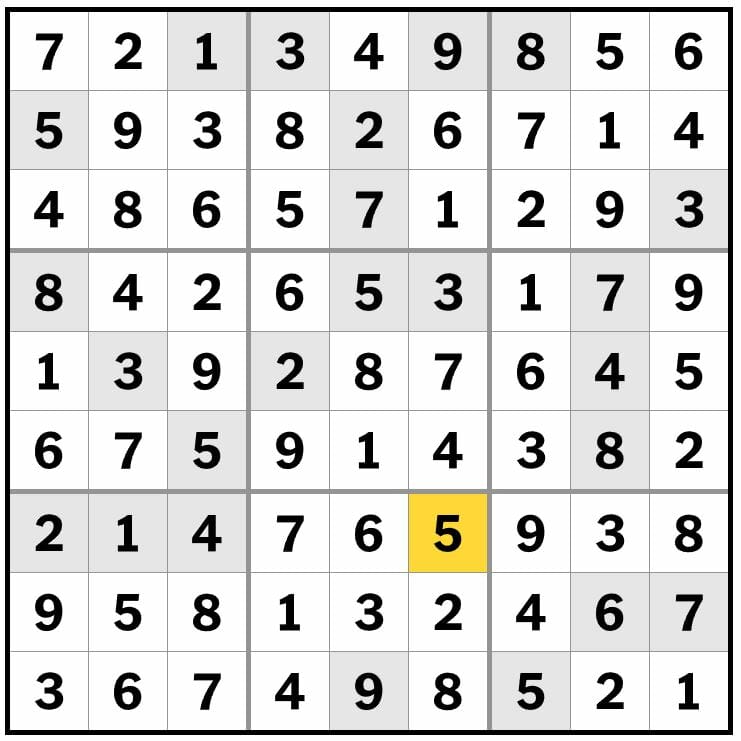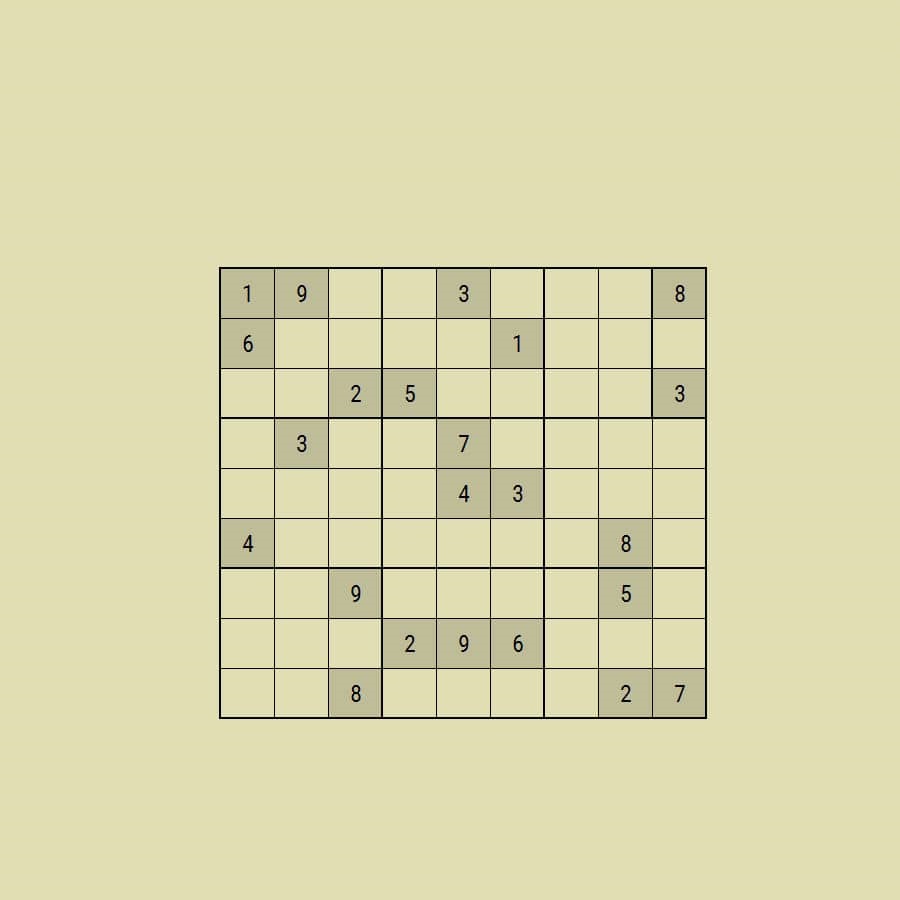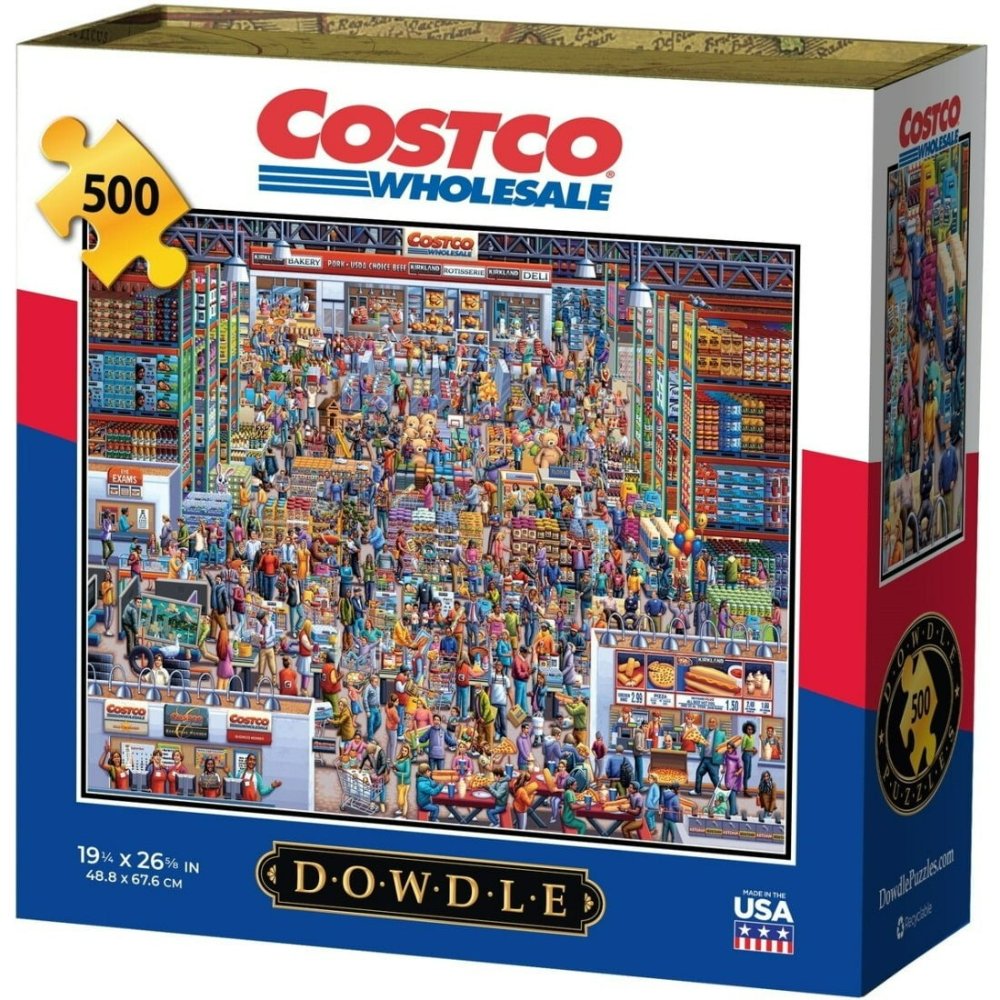Sudoku is a popular puzzle that has captured the hearts and minds of many enthusiasts around the globe. Among the various levels of Sudoku puzzles, the New York Times (NYT) Sudoku Hard puzzle stands out as a special challenge. This article explores what makes the NYT Sudoku Hard so alluring, offers strategies to master it, and discusses the benefits of engaging with such puzzles.
Understanding NYT Sudoku Hard
What is Sudoku?
Sudoku is a number-placement puzzle that follows a simple set of rules. The grid is often divided into nine 3×3 boxes. The objective of the game is to fill the entire 9×9 grid with numbers from 1 to 9, ensuring that each column, row, and 3×3 box contains each number exactly once. This straightforward rule set forms the basis of what can become an intricate and thought-provoking challenge.

What Makes NYT Hard Different?
The NYT Sudoku Hard puzzles and regular Sudoku puzzles differ primarily in difficulty. The hard variant contains fewer initial numbers, which presents several challenges. The more complex layout means players have to apply advanced strategies to reach a solution. The difficulty level is set to encourage logical thinking and problem-solving skills.
Many players find the NYT Hard puzzles thrilling. A well-placed number can suddenly reveal new possibilities, creating a sense of excitement. Conversely, incorrect placements can lead to confusion or mistakes, adding to the challenge. This balance keeps players engaged and coming back for more. Players often relish the journey to decipher each puzzle, pushing their mental limits along the way.
Strategies for Solving NYT Sudoku Hard
Start with the Basics: Scanning
At the beginning of any Sudoku puzzle, scanning is vital. This means reviewing the grid for any numbers that are already placed. Look for rows, columns, and boxes that have a higher number of filled cells. Establish where numbers could logically fit. For instance, if a certain number appears frequently in a row, it’s more likely to be limited by the other cells in that row.
Use Pencil Marks Wisely
Pencil marks can be a game-changer when solving the NYT Sudoku Hard puzzles. These are small notations you can make in each square to indicate potential numbers. When you suspect that a certain number might fit in a square, write it in small. As you progress through the puzzle, you will eliminate possibilities, allowing you to refine your pencil marks to reflect your findings.
Using pencil marks helps to visualize potential solutions. As more numbers are filled in, you can systematically eliminate options, leading to a more clear conclusion about which numbers should fit in specific squares. Suppose you have a box with just two possible numbers for a cell. In that case, you can make educated guesses based on the placements in the other boxes. This technique aligns with the principles of deductive reasoning, allowing the player to make informed choices.
Focus on Hidden Singles
Hidden singles are another essential strategy for tackling NYT Sudoku Hard. A hidden single occurs when a number can only go in one cell within a row, column, or box, even if it’s not immediately apparent. For instance, if a number is absent in a row but possible in three cells, investigate whether it can be eliminated from two out of those three cells. That hidden single can lead to unlocking further numbers.
Identifying hidden singles can dramatically simplify complex puzzles. This strategy focuses on deduction and can save time as you progress. The more you practice recognizing hidden singles, the more intuitive this will become, enhancing your overall solving skills and confidence.
Benefits of Solving Hard Sudoku Puzzles
Enhances Brain Function
Solving Sudoku puzzles, particularly hard ones, is like training your brain. The mental workout enhances cognitive function and problem-solving abilities. Studies suggest that engaging in puzzles boosts memory and increases concentration. Furthermore, regularly tackling difficult puzzles may help delay cognitive decline as one ages.
Playing Sudoku also improves logical thinking. Each number placement forces you to examine the implications of your choice upon a broader scale. You’re not merely filling in blanks; you’re strategizing based on constraints. This skill is not just useful in puzzles but also applicable in real-life situations requiring logical reasoning.
Offers Emotional Benefits
Aside from cognitive advantages, solving NYT Sudoku Hard can also bring emotional benefits. The process can be a form of stress relief. When you focus on a puzzle, it helps to distract you from daily worries. The immersive experience allows you to enter a state of flow, where you feel engaged and relaxed.
Completing a difficult puzzle can lead to a sense of accomplishment. That feeling can boost your mood and provide a source of pride. Each solved puzzle also serves as a tangible example of your intellectual capabilities. Therefore, as you tackle harder puzzles, you’re not only improving skills but also enhancing your overall emotional well-being.
Fosters Community Engagement
Sudoku aficionados often form communities. These groups offer forums to discuss strategies, techniques, and solutions. Engaging in such discussions enhances the enjoyment of the game. Many people share strategies or resources online, making it easier for newcomers to learn the ropes. Whether through social media, online puzzles, or local meet-ups, Sudoku brings individuals together.
The communal aspect of Sudoku elevates the experience. Sharing tips or even competing in timed challenges can enhance the enjoyment. The camaraderie among players can lead to lasting friendships. You can progress faster when surrounded by others who share similar interests. Many players report an increase in motivation and skills thanks to this community backing.
Advanced Techniques to Master NYT Sudoku Hard
X-Wing Technique
One of the more advanced strategies that can assist in solving NYT Sudoku Hard puzzles is the X-Wing technique. This approach focuses on two rows and two columns. By identifying a number that appears only twice in each row, you can draw a pattern resembling an “X.” The intersections indicate where that number cannot appear.
Understanding this technique requires practice, but once mastered, it can significantly simplify puzzles. Utilizing the X-Wing method exposes players to deeper strategies. Players gain a new perspective on how numbers interrelate across the grid.
Swordfish Technique
Similar to the X-Wing, the Swordfish technique expands the concept further. While an X-Wing covers two rows and columns, Swordfish can involve three. By observing existing numbers, you can eliminate potential placements for a number that are not part of this three-row-three-column setup.
This method is often more complex and requires keen observational skills. Mastery of Swordfish can elevate any player to a more advanced level. However, it may require additional practice, and recognizing the patterns may take time.
Layered Logical Deduction
When confronted with particularly challenging NYT Sudoku Hard puzzles, logically layering your approaches can be advantageous. This method involves applying multiple strategies simultaneously. For example, you might use pencil marks while also scanning for hidden singles. By amalgamating various techniques, you give yourself the most possible options to solve the puzzle effectively.
Being versatile with techniques fosters adaptability. Players learn to approach puzzles from multiple angles. This flexibility allows them to tackle a variety of Sudoku challenges with ease. Most importantly, it helps build a deeper understanding of the game’s intricate logic.
Progressing Through Difficulty Levels
Beginner to Intermediate
For those new to the world of Sudoku, moving from beginner to hard puzzles can feel daunting. It is essential to build a strong foundation before jumping into challenging variations. Start with easier puzzles and gradually increase complexity. Each solved puzzle builds confidence and skills.
Practicing techniques learned in easier puzzles is crucial. As your understanding deepens, each new challenge becomes a welcome opportunity for growth. Take breaks as needed; sometimes stepping away can give you a fresh perspective on the puzzle.
Intermediate to Advanced
Once you’ve mastered intermediate puzzles, NYT Sudoku Hard is waiting. Here, the mental acrobatics become more pronounced. You may find yourself employing multiple strategies in a single puzzle.
Practicing the advanced techniques explored in this article can significantly enhance your solving abilities. Document your progress and reflect on what’s working, adjusting your strategy accordingly. Watch as your expertise grows, turning once-daunting challenges into thrilling experiences.
Finding Personal Challenges
Lastly, tailor your Sudoku journey. Pair yourself with like-minded enthusiasts or experimental genres of Sudoku. Different formats can provide new kinds of challenges while enhancing your skill set. Be it classic 9×9 grids or alternative shapes and rules, the world of Sudoku is vast. Embrace the variations to keep your interest alive.
Conclusion: Embracing the Challenge
The New York Times Sudoku Hard puzzle offers a thrilling experience for those who dare to dive deep into number logic. Each puzzle is a new adventure filled with twists and turns. The strategies discussed can guide you on this journey, transforming the way you approach problem-solving.
In addition to cognitive benefits, Sudoku deeply enriches emotional and social aspects of life. The sense of accomplishment and community you build will enhance your experience even further.
Remember, practice makes perfect. So grab a pencil, pull up a challenging NYT Sudoku Hard puzzle, and embrace the challenge. The world of Sudoku awaits, and each solved puzzle is a testament to your growing skills and perseverance. Happy puzzling!
Additional Resources for Sudoku Enthusiasts
Websites and Apps
For those passionate about Sudoku, various websites and apps can help you refine your skills. Many of these platforms offer daily puzzles, tutorials, and forums for discussion. Websites like Sudoku.com or apps like “Sudoku: The Clean One” broaden your access to challenges, including ones that mimic NYT puzzles.
Books on Sudoku Strategies
Consider investing in books focused on solving Sudoku puzzles. Many authors delve deeper into techniques and strategies beyond the beginner level. “Sudoku for Dummies” or “The Art of Sudoku” offer great insights, plus exercises ranging from easy to hard puzzles.
Sudoku Puzzles for Different Ages
Don’t limit yourself to one type or difficulty level; explore Sudoku puzzles designed for various ages. You can introduce younger family members to the joy of Sudoku through specially designed child-friendly versions. Engaging the family can lead to friendly competition and community bonding.
Participating in Competitions
For those ready to take solving to the next level, consider entering Sudoku competitions. Various events allow you to compete against others or even take on timed challenges. Competitions can offer a unique thrill as well as the opportunity to measure progress against peers and experts.
Continuous Learning
Lastly, remain open to learning. The world of Sudoku continually evolves with new techniques and patterns emerging. Join forums, watch videos, or subscribe to newsletters dedicated to Sudoku. The more engaged you are, the more fulfilling your puzzle-solving experience will become.
Exploring the landscape of NYT Sudoku Hard can turn a casual activity into an enriching endeavor. Dive in and let the challenge sharpen your mind and nurture your love for numbers! Happy Puzzling!




